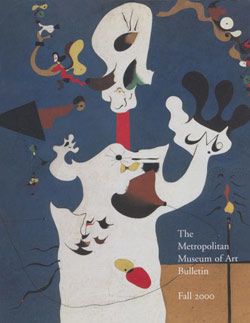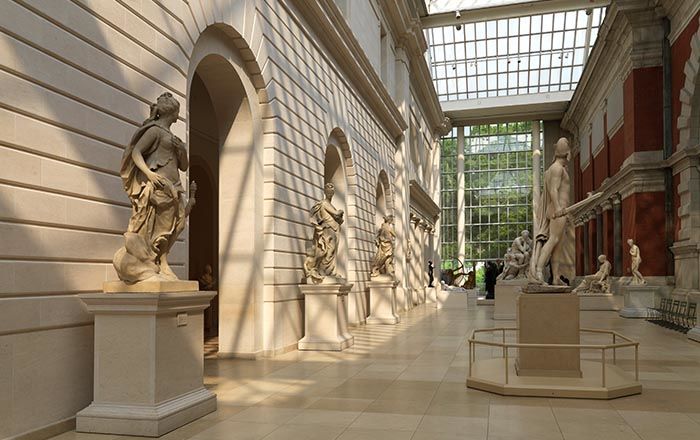Bottle
Studio of Taxile Maximin Doat French
Not on view
Doat was among the earliest ceramists to use pate-sur-pate, the technique of creating translucent low-relief compositions from layers of porcelain slip. First produced at Sèvres in 1849, it became a central feature of Doat's work, both at the national manufactory, where he was employed from 1877 to 1905, and in his own atelier nearby, the Villa Kaolin. Uninterested in the current fashion for japonisme, Doat chose allegorical or whimsical subjects, frequently setting them as plaques on a stoneware body, the sheen of the porcelain contrasting effectively with the rougher texture of the ground. On this bottle two oblong plaques depict children picking grapes and apples, while a wineglass and cider jug are seen in medallions below the handles. As if to emphasize the peasant-flask character of the model, the plaques have been attached to the body by porcelain thongs. This is one of three known examples of the model; one, now in the Musee des Arts Decoratifs, Paris, was exhibited in 1902 with the title "Champagne et Normandie."
This image cannot be enlarged, viewed at full screen, or downloaded.


